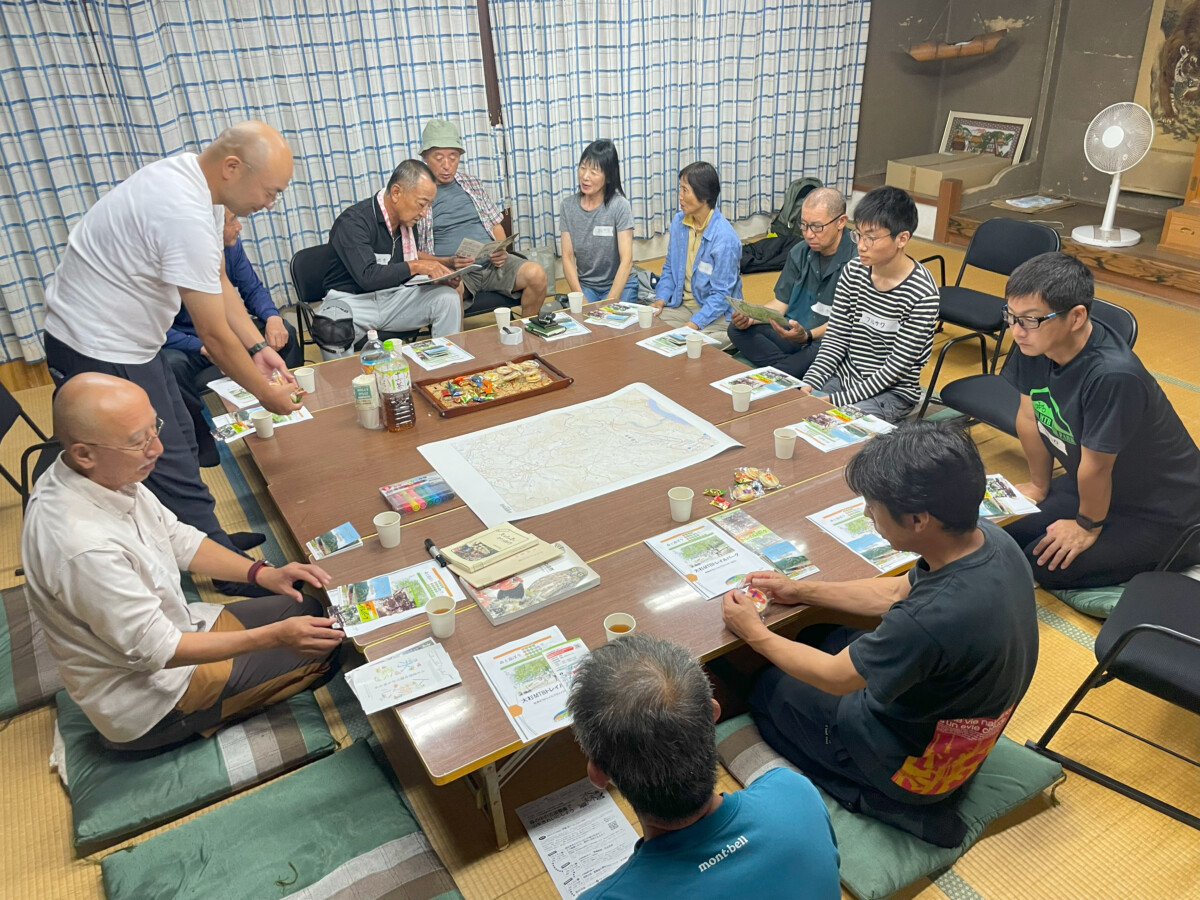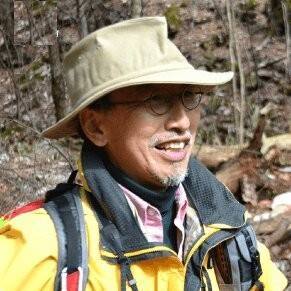Old road in the forest
A Journey Through History
This initiative aims to provide an experience of the lives of people who have lived in the rich natural environment of Yaotsu and to deepen the connection with the natural surroundings.
With the participation of local residents and volunteers from inside and outside Yaotsu, the goal is to develop new tourism resources through the restoration of the old paths in the Kutami area.
Once used as a thoroughfare, these paths have fallen into disuse as new paved roads were built, reducing traffic. However, the path still has value; the main issue is the shortage of people, leading to neglected maintenance and overgrowth, making it difficult to use.
By walking these old paths, we can reconnect with the abundant natural surroundings. These are the same paths that children once walked to school, offering a glimpse into history. The view of the New Tabiashi Bridge, home to the “Gifu Bungee” – the tallest in Japan – is a perfect spot to experience nature.
Let’s bring new life to the old paths!
If you walk along this path, you can experience the richness of nature.
Why not use this road, which brings to mind memories of elementary school students walking along it to school in the past, as a place to get a glimpse of Japan’s tallest bungee, the Shin-Tabiashi Bridge, and a place to get in touch with nature?
Let’s bring light back to the ancient roads.
Restoring the Old Paths ? Planning Meeting

Restoring an old path is not a simple task; each location has its unique flora and history.
We are focusing on an old path in the mountainous area of the Kudami, Ohira districts of Yaotsu. To start, we need to hear from the people who have lived in this area for many years to learn how the path was used and what memories are attached to it.
The “Old Path Restoration Operation Meeting” began with sharing stories from the past, including memories of the Kutami Festival and local community events. The lively discussions brought back fond memories of children playing together.
Participants from outside the town listened attentively to these stories and, through their questions, expressed a deep connection to the area. This collaboration helped to generate ideas on how to best utilize and restore this precious place.

The discussions delved into how people once used the path and the significance it held in their lives. It became clear that, even today, there is great love and attachment to these places.
Restoring this path is not just about cleaning up an old trail ? it’s about revitalizing a part of the community’s heart, fostering a deeper connection to nature, and preserving it for future generations.
Now, we are moving to the practical side of the project. What did the locals remember about the path, and how can their ideas be incorporated into the restoration?
To do this, we will walk the paths, assess the current state of the trails, and gain a better understanding of the areas that were discussed during the meeting.
Some of the stories shared, like the “narrowness” of certain trails or the steepness of mountain paths, need to be experienced firsthand to fully understand.
Through actual fieldwork and discussions, we will refine our plans, aiming to bring light back to these old paths and preserve them as part of the living history of Yaotsu Town.
[Facilitator] PMr. Eiichi Ito, Head of the Forest Livelihood Research Institute (Captain Yamanji)
